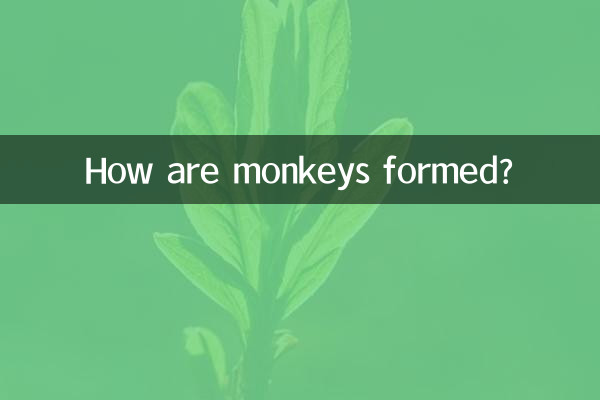How are monkeys formed?
Recently, the origin and evolution of monkeys has become one of the hot topics on the Internet. This article will combine the popular discussions and scientific data on the Internet in the past 10 days to present the formation process of monkeys in a structured form, and attach an analysis of relevant hot content.
1. The evolution of monkeys

Monkeys are primates whose evolutionary history can be traced back to about 60 million years ago. The following are the key stages of monkey formation:
| period | key evolutionary events | scientific basis |
|---|---|---|
| Paleocene Epoch (65 million years ago) | The earliest primate ancestors appear | Fossil record reveals small tree shrew-like mammals |
| Eocene Epoch (56 million years ago) | Evolved characteristics closer to those of monkeys | Darwinius and other early primate fossils |
| Oligocene Epoch (34 million years ago) | The differentiation of old and new world monkeys | Genetic analysis and fossil distribution differences |
2. Recent hot discussions on the Internet
The following are the hot topics about monkeys on the Internet in the past 10 days:
| topic | Discussion popularity | Main point |
|---|---|---|
| New discovery of monkey intelligence | Popularity: ★★★★☆ | Study shows monkeys can use simple tools |
| Urban monkey nuisance incident | Popularity: ★★★★★ | There have been reports from many places of monkeys entering urban areas in search of food. |
| Monkey emoticon culture | Popularity: ★★★☆☆ | A series of monkey-themed emoticons created by netizens |
3. The scientific mechanism of monkey formation
The formation of monkeys is mainly completed through the following biological mechanisms:
| Mechanism type | function | Specific performance |
|---|---|---|
| natural selection | Adaptive feature retention | Grasping ability, stereoscopic vision, etc. |
| genetic mutation | generate new features | Tail length, hair color, etc. |
| geographical isolation | Promote species differentiation | Differences between Old and New World Monkeys |
4. The living conditions of contemporary monkeys
According to the latest survey data, global monkey populations face the following major challenges:
| Threats | degree of influence | Typical cases |
|---|---|---|
| habitat loss | High threat | Deforestation in Southeast Asia |
| illegal trade | medium threat | Black market trade in pet monkeys |
| climate change | emerging threats | changes in food sources |
5. The evolution of the relationship between humans and monkeys
From ancient times to the present, the relationship between humans and monkeys has gone through several important stages:
| historical period | relationship characteristics | representative evidence |
|---|---|---|
| primitive society | food competitor | Cave painting records |
| agricultural civilization | Partially domesticated | monkey show tradition |
| modern society | Research and Conservation | animal protection legislation |
Conclusion
The formation of monkeys is a long process of natural selection, reflecting the wonderful laws of biological evolution. Recent online buzz not only demonstrates the public's continued concern for primates, but also reminds us of the importance of protecting these closely related species. Through a combination of scientific research and public education, the harmonious coexistence of humans and monkeys will have a better future.

check the details

check the details